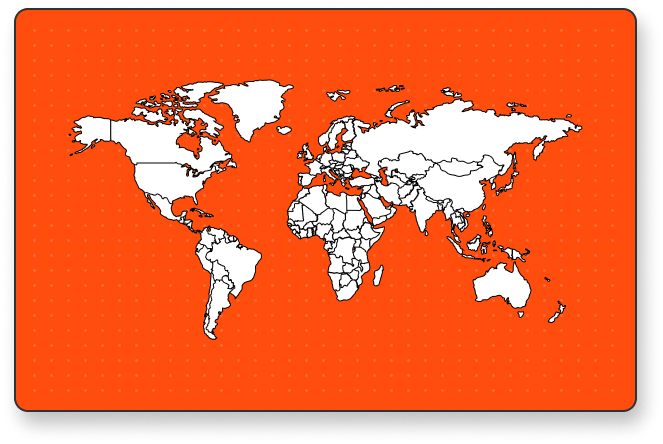Brokerage Business
9 minutes read
May 14, 2025
Broker Risk Management: How it Works
Broker risk management protects brokerage firms from financial loss, regulatory penalties, and operational failure. The process identifies exposure across trading, liquidity, credit, and compliance functions. Risk is monitored in real time and controlled using margin rules. For that purpose, automated alerts, position limits, and integrated reporting are used. Modern brokerages use specialized systems to ensure capital protection and trading stability.
What is Broker Risk Management?
Broker risk management is the control system that allows a brokerage to survive in fast-moving financial markets. It monitors the firm’s financial health, client behavior, and trading activity. When applied correctly, it prevents losses, limits exposure, and keeps the business within regulatory boundaries. These systems rely on automation, clear rules, and real-time feedback to reduce reaction time and enforce discipline.
- Trade surveillance – Detects irregular orders, overleveraged positions, or abusive behavior.
- Margin monitoring – Flags accounts with low equity or excessive leverage.
- Liquidity tracking – Checks available depth and execution quality with liquidity providers.
- Counterparty risk control – Evaluates third-party exposure and limits.
- Compliance monitoring – Verifies all actions align with local regulatory frameworks.
- Stress testing – Simulates market shocks to test resilience and margin buffers.
Well-structured systems allow brokers to intervene early. Risk triggers can block trades, force margin calls, or alert internal teams, all without delay. This response time is what separates stable operations from collapses during high-volatility periods.
Types of Risks Brokers Face
Brokerages operate in a high-risk environment. Each type of risk affects profitability, client trust, and legal standing. Understanding these risks is the first step to managing them effectively.
Market Risk
Market risk arises when asset prices move in a direction that creates losses. Brokers that internalize trades or operate as market makers are especially exposed. Sudden price swings, news events, or black swan movements can cause cascading losses if positions are not hedged or limited.
Liquidity Risk
Liquidity risk occurs when brokers cannot execute trades at expected prices. This happens in low-volume markets, volatile sessions, or during system outages. The result is price slippage, trade rejections, or failure to fill client orders.
Credit Risk
Credit risk refers to a client’s failure to meet financial obligations. If a trader exceeds their margin and fails to cover losses, the broker absorbs the deficit. High-leverage accounts, unverified clients, or aggressive strategies increase exposure to unpaid balances.
Operational Risk
Operational risk stems from internal failures. System downtime, trade execution errors, or employee mistakes can trigger financial loss or compliance breaches. Weak infrastructure or lack of internal controls raises this risk significantly.
Regulatory Risk
Regulatory risk is the danger of breaching legal requirements. Brokers must comply with licensing rules, anti-money laundering laws, and trade reporting standards. Violations result in fines, audits, or business shutdowns.
How Brokers Monitor Risk in Real Time
Modern brokerages rely on real-time monitoring to stay ahead of risk. Delays of even a few seconds can lead to large financial losses, especially in high-frequency or leveraged environments. Brokers use automated systems to track client activity, market movement, and liquidity conditions continuously. These systems feed data into risk dashboards used by compliance officers, trading desks, and executive teams.
- Live trade feeds – Capture and analyze every trade and order placed by clients.
- Position tracking – Updates exposure and margin use for each account in real time.
- Limit alerts – Sends instant notifications when risk thresholds are breached.
- Liquidity panel – Shows execution speeds, depth, and slippage across providers.
- System health checks – Monitors server load, API uptime, and execution failures.
Real-time tools reduce dependence on manual reviews. They allow instant responses like blocking orders, adjusting leverage, or suspending accounts. Without these systems, a single bad trade or infrastructure issue could cause widespread losses.
Risk Mitigation Techniques Used by Brokers
Risk identification alone isn’t enough. Brokers must act fast to neutralize exposure before it causes damage. Mitigation strategies are built into both the trading infrastructure and business policy. These actions reduce the chance of loss and protect both the broker and its clients.
- Hedging exposure – Brokers offset open client positions by placing opposing trades with liquidity providers. This protects capital when market direction turns against client flow.
- Stop-out rules – Automated systems close losing positions once margin levels fall below critical thresholds. This limits drawdowns and prevents account balances from going negative.
- Leverage control – Brokers set strict maximum leverage ratios to reduce the risk of large losses from small price movements. Ratios are often dynamic based on asset volatility or client profile.
- Client tiering – High-risk clients are placed in separate groups with tighter controls. Trading limits, withdrawal checks, and risk reviews are applied more frequently.
- Execution limits – Brokers cap trade sizes, frequency, or exposure by asset class. This reduces concentration risk and guards against flash crashes or abuse.
- Two-way margin monitoring – Systems track not only client margins but also the broker’s margin held with upstream providers. This ensures operational solvency during rapid moves.
Effective risk mitigation relies on speed and consistency. Brokers with pre-defined rules and automated responses reduce the chance of emotion-driven decisions and platform instability.
Regulatory Compliance in Broker Risk Management
Risk management is not just about avoiding losses – it’s also about meeting legal requirements. Financial regulators expect brokers to maintain transparent, auditable, and enforceable controls. These controls must protect client funds, prevent market abuse, and ensure orderly operations. Brokers that fail to comply face penalties, loss of license, or even complete shutdown.
- Client fund segregation – Ensures that client deposits are stored separately from broker operating capital.
- Transaction reporting – Automatically submits trade data to regulators under frameworks like MiFID II or EMIR.
- AML/KYC monitoring – Tracks client behavior for signs of fraud, identity risk, or illegal activity.
- Capital adequacy checks – Maintains internal alerts to ensure brokers have the minimum financial reserves required by law.
- Audit logging – Records every trade, adjustment, and user action for compliance inspections.
- Stress tests and disclosure – Documents risk scenarios and submits routine reports to regulators.
These systems are reviewed by compliance officers and external auditors. The most effective brokers integrate risk and compliance into a single dashboard, reducing errors and ensuring rapid decision-making during audits or investigations.
Tools and Software for Broker Risk Management
Brokerages rely heavily on specialized software to implement and enforce risk controls. These systems are often integrated into the core trading infrastructure, including platforms like MetaTrader 5, cTrader, or proprietary dashboards. Real-time data feeds, client activity logs, and pricing engines all feed into risk modules that analyze exposure and flag irregularities instantly.
Popular risk management tools include:
- Trade surveillance engines
- Margin monitoring systems
- Liquidity dashboards
- Compliance automation platforms
Some brokers build in-house tools (like FintechFuel does) tailored to their operating model, while others rely on vendors like Brokeree, Centroid Solutions, or FXCubic. These platforms offer APIs and dashboards that support live margin enforcement, position analytics, and trade limit controls.
Machine learning is increasingly used to detect patterns of high-risk behavior, such as aggressive scalping, toxic flow, or coordinated abuse. Automated alerts, AI-powered decision trees, and pre-configured stop-outs allow brokers to act before losses accumulate. Cloud-based risk systems are now preferred due to scalability, uptime, and remote access during global events.
Best Practices and Real-World Application
Effective broker risk management relies on structured execution and continuous refinement. Top-performing firms apply proven practices across systems, policies, and personnel.
Real-Time Visibility Across Systems
Brokerages that lead in risk management maintain full visibility across all key operations. Real-time dashboards provide instant access to client positions, leverage usage, open exposure, and margin levels. These systems aggregate data from multiple trading platforms and liquidity providers. Risk teams, dealing desks, and compliance officers can monitor events as they happen and act without delay.
This visibility allows brokers to stop loss-making behavior before it escalates. For example, when client equity drops near a critical threshold, alerts are triggered, and automated stop-out rules engage. Without this infrastructure, issues go unnoticed until they impact liquidity or breach regulatory requirements. Real-time risk control is no longer optional. It is now a baseline expectation in regulated and high-volume brokerages.
Dynamic Hedging Based on Net Exposure
Some brokers, especially those acting as principal dealers, avoid hedging each client position individually. Instead, they calculate the firm’s net open exposure and hedge only the remaining risk. This dynamic approach lowers transaction costs and increases operational efficiency. However, it requires precise, live updates of client behavior and fast execution with external liquidity providers.
A net exposure model works well when client flow is balanced or predictable. If risk builds unevenly, the hedging system adjusts in real time. Advanced brokers automate this function using risk engines that monitor the entire book, recalculate exposure after every order, and route offsetting trades to the best liquidity path. Firms without this capability face higher costs or exposure to volatility spikes.
Special Risk Controls for Crypto Brokers
Crypto brokerages face a distinct risk profile. Digital assets often trade with extreme volatility, thin liquidity, and fragmented infrastructure. Brokers must implement controls that account for both market and operational risk. These include cold wallet exposure limits, internal circuit breakers, real-time blockchain monitoring, and collateral valuation tied to on-chain prices.
In addition, crypto platforms deal with counterparty risks across exchanges and DeFi protocols. Brokers managing these relationships must regularly assess wallet security, settlement delays, and smart contract vulnerabilities. Risk rules applied in traditional markets often fail in crypto. To stay solvent, crypto brokers need layered protections customized to asset behavior and custody models.
Layered Defense: Automation Combined with Human Oversight
Automated risk controls provide scale and consistency, but they are not infallible. Human oversight remains essential. Skilled risk officers audit flagged accounts, investigate false positives, and override system errors. This human layer also helps interpret events that fall outside predefined rules, like geopolitical shocks or regulatory changes.
Brokers with mature risk programs deploy layered defenses. Automated triggers handle routine limits, while trained teams oversee edge cases and stress scenarios. This model reduces both false alarms and response delays. In contrast, firms relying only on automation face higher risks from system bugs or blind spots. Risk must be actively managed, not just monitored.
Lessons From Past Market Events
Historical failures show the cost of weak risk management. During the 2022 crypto liquidity crisis, several brokers collapsed due to poor exposure controls, slow response times, and over-reliance on unstable partners. Those that survived applied strict leverage limits, diversified counterparties, and enforced stop-outs as client balances deteriorated.
Real examples show that brokers with prepared systems – both technical and procedural – avoided systemic loss. These firms didn’t improvise during the crisis. Their systems were already designed for stress. Brokerages that learn from past events are better positioned to handle the next volatility wave. Risk mitigation is not just about protection – it is about endurance.
Final Notes on Broker Risk Management
Broker risk management determines whether a firm can operate safely, scale reliably, and retain client trust. Markets punish hesitation and reward control. Firms that treat risk as a priority, not a back-office function, create stronger trading environments and more resilient business models. Every component, from hedging rules to compliance tracking, must work together as part of a system. It should respond fast, enforce discipline and evolve under pressure. Risk isn’t a checkbox. It’s the foundation that keeps broker operations alive.
FAQ
82

Written by Ivan Bogatyrev
Business Development at FintechFuel
Writing about the exciting worlds of iGaming and the brokerage business, breaking down the latest trends and insights. Making complex topics easy to understand, helping readers stay informed and ahead of the curve.
More by authorRead more

Brokerage Business
10 minutes read
Sep 30, 2025
The brokerage industry in 2026 is entering a new phase shaped by technology, regulation and shifting client demands.


